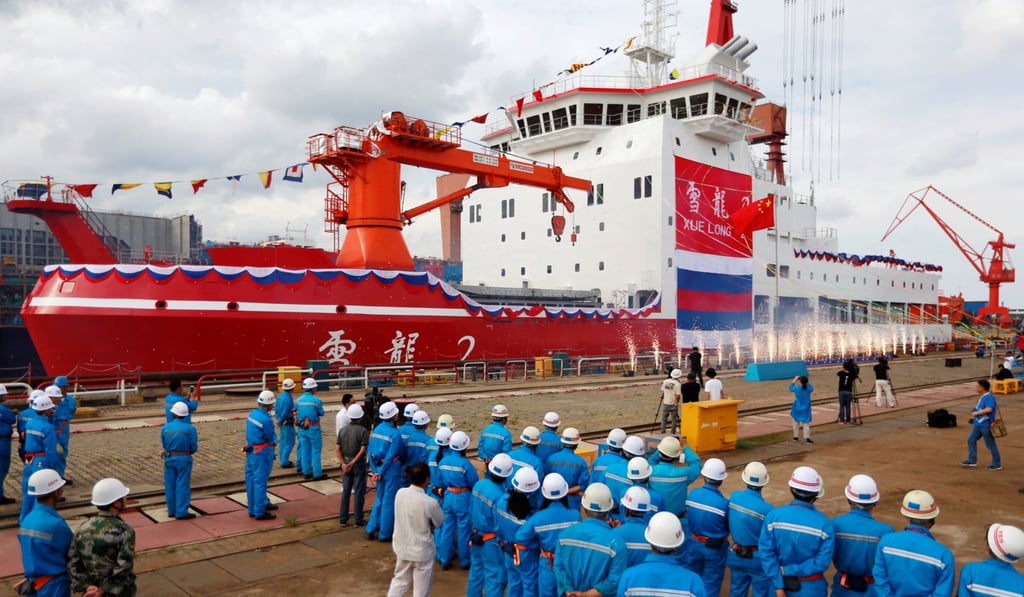China breaks the Arctic ice with launch of new research vessel Snow Dragon II
Icebreaker could pave the way for nuclear powered super ship but for now it’s all about exploration and scientific surveys

China has launched its first home-made icebreaking vessel, a further step towards strengthening its exploration and research around the earth’s poles.
The Xuelong 2, or Snow Dragon II, was jointly designed by Finland’s Aker Arctic Technology and a China State Shipbuilding Corporation (CSSC) institute. Construction began in 2016 at CSSC’s Jiangnan Shipyard in Shanghai.
The vessel features powerful propellers on both prow and rear, making it the world’s only polar research boat vessel that can break ice while going forwards or backwards. Its power, speed, and on-board research equipment add up to a significant upgrade on the original Xuelong, which was bought from Ukraine in 1994 and upgraded in 2013, after a refit in 2007.
The launch of Xuelong 2 on Monday follows the news that China has begun work on a nuclear-powered icebreaking cargo vessel. In June, China National Nuclear Corporation announced it was looking for partners to build a polar supply ship that is expected to carry a group of third-generation miniaturised reactors.
The development of a nuclear-powered icebreaker could have global implications. China would acquire, through its design and construction, the knowledge and experience to manufacture large-scale nuclear-powered ships that could eventually be applied to building the ultimate super warship – a nuclear-powered aircraft carrier.
The former Soviet Union went through a similar learning process – building nine nuclear-powered icebreaking vessels before its first attempt at a nuclear-powered aircraft carrier, the Ulyanovsk.

The technology could also be applied to floating nuclear power plants. Russia’s Akademik Lomonosov, the world’s only floating power unit, has been in operation since April this year. It generates 70 megawatts of electricity via two KLT-40 icebreaker type reactors, enough to power the needs of 200,000 people.